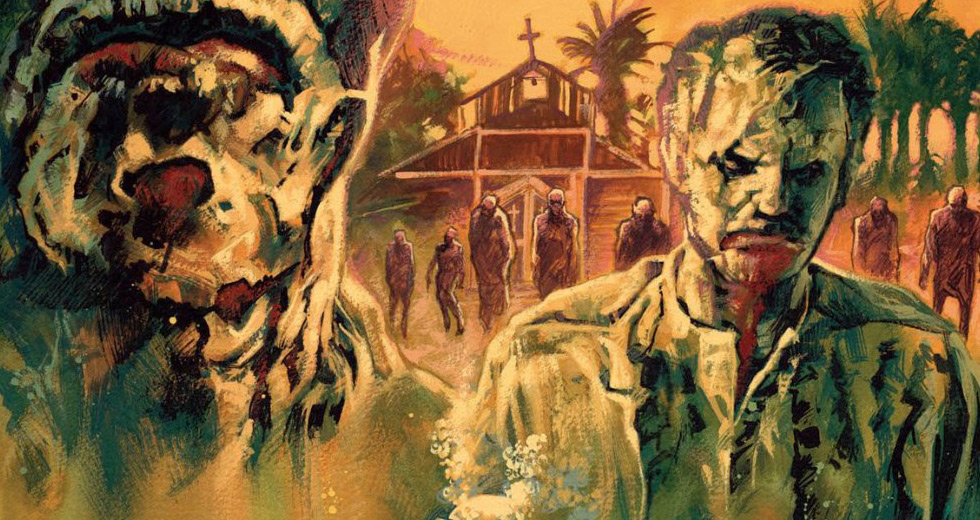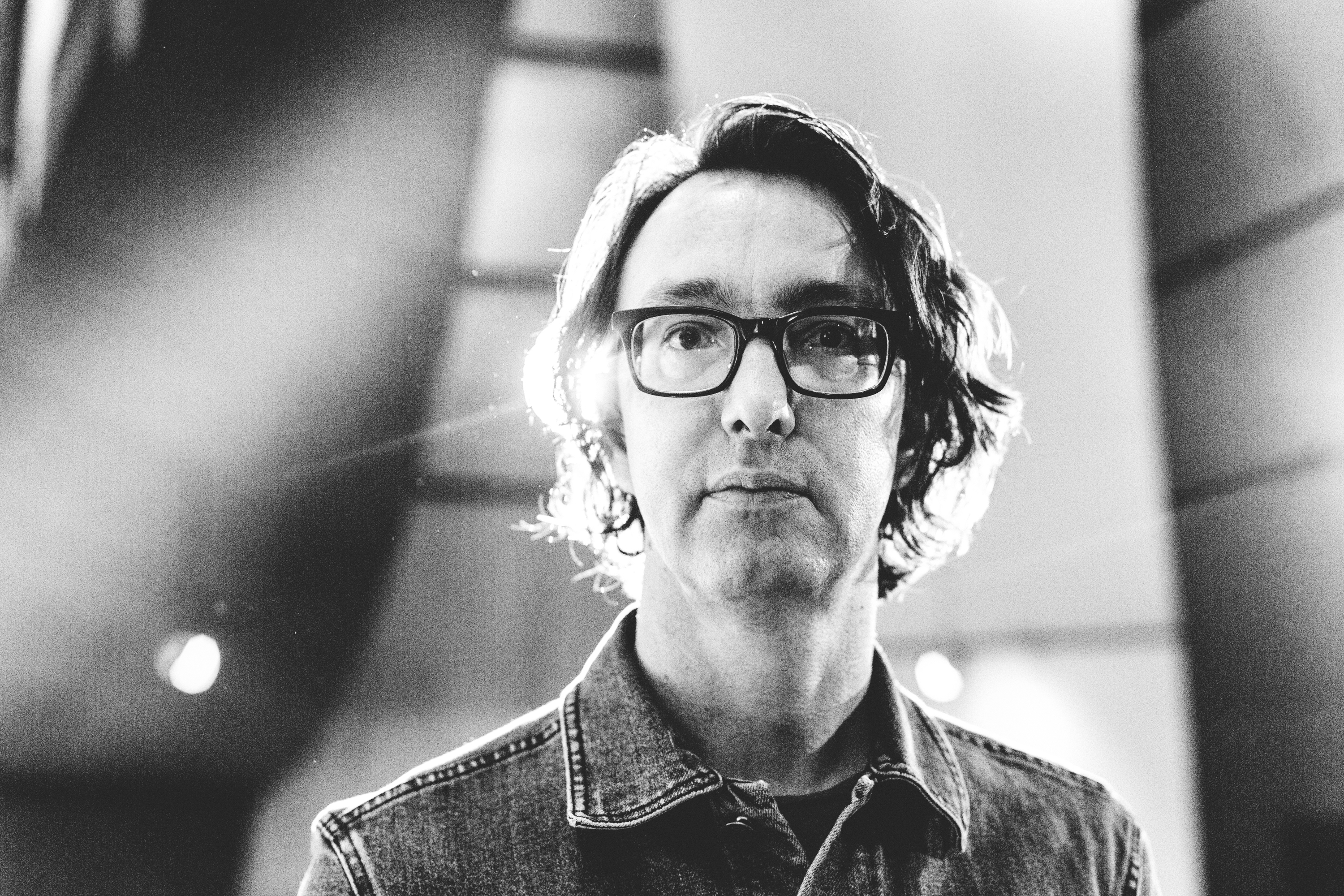Interview: Brad Fiedel, Terminator soundtrack composer
Brian Reitzell talks with the composer about the fascinating scores for the blockbuster franchise

In an excerpt from this month’s Music in Film, composer Brian Reitzell chats with Brad Fiedel about the challenges and excitement that came with scoring the first two Terminator films.
On the first Terminator movie, were you using MIDI? You were kind of right on the cusp.
There was MIDI, but I didn’t have it available to me. It might have been just starting out when we were doing the score. Oberheim had a chain, drum machine sequencer and keyboard, and the Prophet 10 had their own onboard sequencer. I was actually trying to sync those two together, literally by hand.
There’s a lovely, kind of looseness that really works. It’s something I love about John Carpenter as well. That stuff is not locked. It probably took quite a bit of experimenting just to get the thing to kind of loop properly.
Yeah, and it was also monophonic. It was one track at a time. I was working on a number of films during that period where, if there were any special effects, they were very painstaking and slow, and therefore, there were always changes in timing afterward. Which either meant an amazing film editor had to come in. Or, in many cases, I would have to go back and re-record some stuff. Everything is a lot more flexible now. Things were loose then, but production-wise, they weren’t flexible, and very time consuming.
On Terminator, there was no compositional software that I was writing in or able to deal with. In Terminator 2: Judgment Day, I had some compositional capability on my two Fairlight CMIs. I had all my percussive stuff in one machine, and all the sustains in another. In order to get to the same place at the same time, I had to create exact versions of all the time signatures and tempos. If I missed one and made a change, all of a sudden, everything would go out of sync, and I had to hunt around and find the typo.
It was wonderful to be on the cutting edge of things as they came, and that for me, went all the way back to the early ’70s and playing on some of the first Moog synthesizers that, now, everybody wants to go back to. I’m just so relieved to be done with learning all these programming methods. I’m at acoustic piano and voice at the moment. That’s been an arc in itself, the technology through my lifetime. I remember sitting in the ’70s with a guy who was producing some of my song demos. We were using some synths, and we were just dreaming up this future, where maybe on stage you would have this big brain box thing, where you could pre-program your sounds and hit a button, and go from one song to the next. Which, now, is stuff that you could get for 100 bucks on a Casio. It just was a gleam in our eyes at that point. It went way deeper and way faster than we ever could imagine.
Yesterday, I was watching Terminator 2 in my studio, and the sound effects in that film are huge. The sound effects are at 11. Your score is at about 9.5 in some places. That movie was pretty groundbreaking in terms of sound effects. How much of that were you privy to?
There are things in there that, unfortunately – because they were post-producing the sound up in Skywalker, and I was in Studio City in LA – I didn’t get to really hear. In theory, it would be good to coordinate with the sound effects people, but everybody was just on survival mode. Just get everything in. I literally had a guy sitting outside my garage (the studio was a garage at that point, basically) and the minute I would mix down a reel’s worth of cues, he had to run to Burbank Airport and literally get on the plane himself and take it to them. We didn’t get to work that closely together, but the stuff worked really well.
Yeah, there were sounds in there, like the motif, that was really almost musically generated from altered forward and backwards sounds of samples. But the T-1000 sound, that’s me. One director I’d worked with in the past came out of the Hollywood premiere screening of that saying, “This is definitely starting a new era off.” He was referring to the kind of seamless relationship between music and sound effects, because he couldn’t tell the difference between what I had done and what they had done, and in some cases, there were things I did that were very much sound effects in a sense, though I didn’t intend them to be.
There’s all of this really multi-dimensional left/right action going on that is cinematically just awesome. How much of that was you, and how much of that was happening up at Skywalker?
It’s like necessity is the mother of invention. There was a technical reason for that. The original mix of the film at that point was on Dolby stereo. Dolby stereo was actually a synthesis of stereo that lived on a two track optical track. When you hit the Dolby box, if you have shared material in your left and right track, it sucks it into the middle track because the middle track doesn’t really exist.
You wanted your stuff to feel wide and hold the energy because all the dialogue’s in the middle. If the music starts to migrate to the center, they’re going to turn it down. What we discovered is, you couldn’t have exact shared material in the left and right. In some cases, when I wanted stereo strength, I would literally lay two different tracks that were slightly out of sync – 12 milliseconds or something – so that the samples weren’t phasing and we could keep it wide. Of course if there was anything percussive, if you have a sound and you put it on the left, just like a normal stereo mix, you put some of it in the right.
That explains why it sounds so super stereo to me. I think it definitely was a blessing because when that semi is cruising through the LA River, and it’s just eating up everything, all the energy from the percussion that’s balancing left and right is giving it this whole other burst of energy. The last big score I did with a big orchestra, I pretty much had to tell the entire percussion section not to play. I just did it all myself, because it all sounded so stock to me.
For a while, I would create all the stuff in my room that I felt was kind of uniquely me. The stuff that might be different in the film than anything you’ve heard before or whatever. Then I would go and put it on the 24 track. Then I would bring the 24 track in and run it locked to another machine and record the orchestra.
In my early scores in New York, which were recorded live, because there wasn’t MIDI, there was hardly any synth. I was trying to be inventive in other ways. What I’m discovering is that what people remember and appreciate the most were the ones where I was working with synths.
I have a little thing inside me where I felt I wasn’t schooled enough, and I had my own little... I did certain scores to kind of prove I could do a “Hollywood” score. They work, and people were happy with them, but in my body of work, they’re the least interesting, least memorable things that I did.

